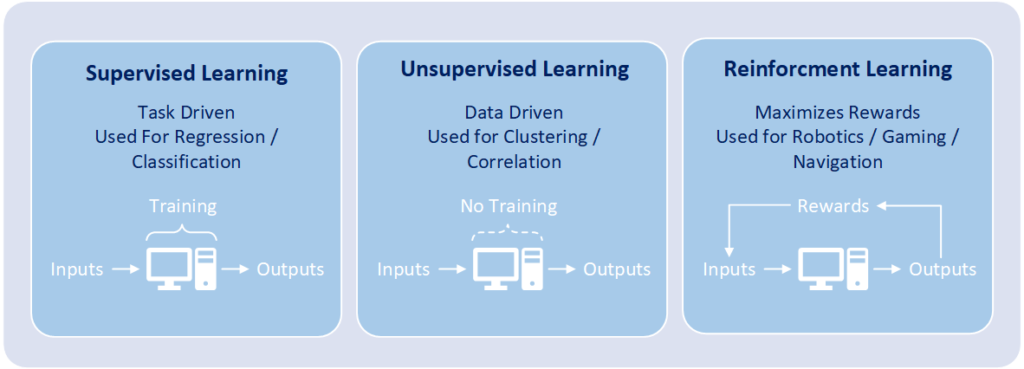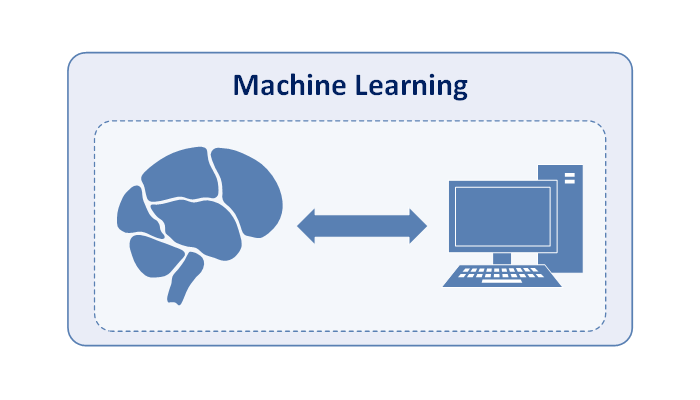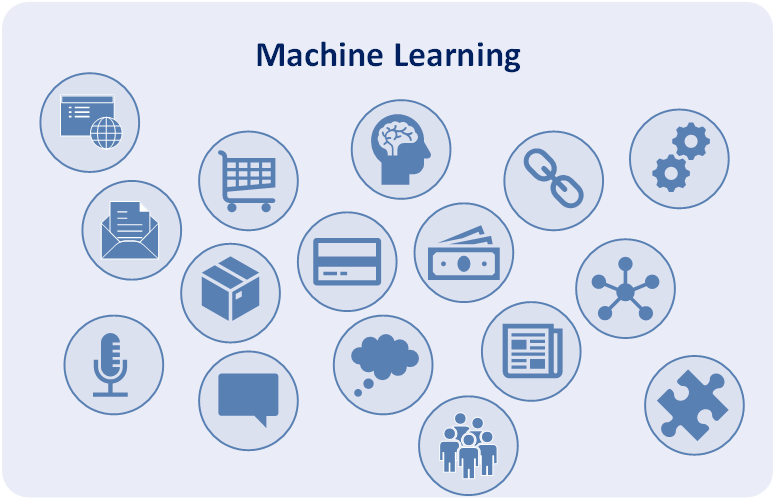Categories of Machine Learning Algorithms

At the core of machine learning are computer algorithms, which are procedures for solving a mathematical problem in a finite number of steps. And machine learning algorithms are utilized to build a mathematical model of sample data, known as “training data”. Machine learning algorithms can be divided into categories according to their purpose. The main categories of machine learning algorithms include:
1) Supervised Learning: Each algorithm is designed and trained by human data scientists with machine learning skills, and the algorithm builds a mathematical model from a data set that contains both the inputs and the desired outputs. The data scientist is responsible for determining which variables, or features, the mathematical model should analyze and use to develop predictions. A supervised learning algorithm analyzes sample or “training data” and produces an inferred function. The process of setting up and confirming a mathematical model is known as “training”. Once training is complete, the algorithm will apply what was learned to new data. Through the use of modeling techniques including classification, regression, prediction, and gradient boosting, supervised learning uses patterns to predict the values on additional data sets. Supervised learning is commonly used in applications where historical data predicts likely future events such as language recognition, character recognition, handwriting recognition, fraud detection, spam detection, and marketing personalization. Algorithms related to classification and regression utilize this category of learning.
2) Unsupervised Learning: Without setup from a human data scientist and without reference to known or desired outcomes, each algorithm infers patterns from a data set Thus the algorithm contains inputs but no previously determined outcomes. Further the algorithm utilizes an iterative approach called deep learning to review data and arrive at conclusions. Additionally, unsupervised learning algorithms are used to find structure in the data, which includes grouping, categorization, and clustering of data. Unsupervised learning algorithms work by analyzing millions records of data and automatically identifying hard to find correlations between data within the data set. These types of algorithms have only become feasible in the age of big data, as they require massive amounts of data to be useful in making predictions. Fundamentally, unsupervised learning conducts analysis on massively sized data sets, to discover useful patterns in the data, and then group the data into unique categories. The main types of unsupervised learning algorithms include clustering algorithms and association rule learning algorithms. Unsupervised learning is often used for grouping customers by purchasing behavior and correlations between purchases (i.e. people that buy X also tend to buy Y).
3) Reinforcement Learning:Through numerous iterations, the machine is trained to make the best possible decisions. The algorithm discovers through trial and error over many attempts which actions yield the greatest rewards. Steps that produce positive outcomes are rewarded and steps that produce negative outcomes are penalized. Subsequently reinforcement learning includes the sequence of decisions and acts like a game is being played. The objective of the mathematical model is for the decision-maker to choose actions that maximize the expected reward over a given amount of time. The decision-maker will most optimally reach the goal by following a good policy. And it is up to the model to determine the policy that figures out how to perform the task to maximize the reward. The policy is determined by starting from totally random trials and finishing with sophisticated tactics. Reinforcement learning is often used for robotics, gaming, and navigation.



